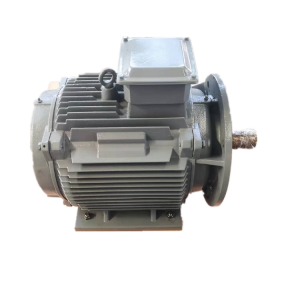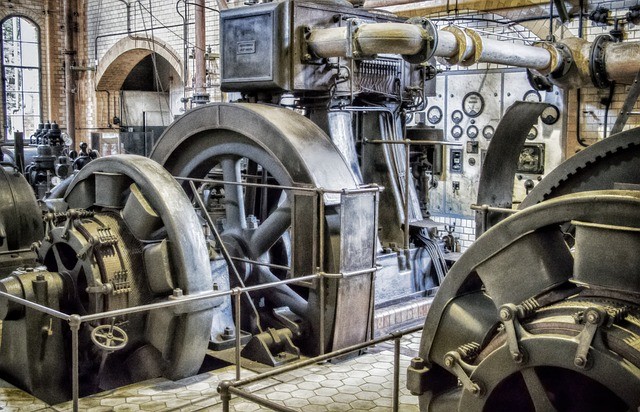Due to its very effective and precise control applications and efficiency, Permanent magnet synchronous motors (PMSM) have become indispensable for industries. The very simple, basic underlying principle behind how magnetic fields and electric currents interact is the Lorentz force. How Lorentz forces come into play in relation to PMSM will provide important knowledge for both optimizing motor performance and achieving energy-saving solutions. . This paper outlines the basics of Lorentz force, how PMSMs function, and deeper understanding and its implications from a relational perspective.

Lorentz force is one of the basic conceptions of electromagnetism; it takes into consideration the interaction of magnetic fields with electric currents. This phenomenon was described by the Dutch physicist Hendrik Lorentz in the late 19th century and has been bearing his name.
The Lorentz force forms the basis for the force acting on the charged particles moving in a magnetic field. This acts directly proportional to the strength of the magnetic field, the charge upon the particle, and the particle’s velocity. From the right-hand rule, the direction of this force is at right angles to both the magnetic field and the direction of the velocity of the particle.
The main contributor to the motion and torque in PMSM is due to the Lorentz force. PMSM consists of a stator with coils and a rotor with permanent magnets. When current is passing through the stator coils, the magnetic field produced interacts with the magnetic field of the rotor magnets and develops a force which rotates the rotor.
To understand how the Lorentz force influences the working of a permanent magnet synchronous motor, let us first understand the underlying principles of generating electromagnetic forces. The principle behind the generation of electromagnetic forces is basically the interaction between magnetic fields and electric currents. Whenever an electric current passes through a conductor-a wire, for instance-a magnetic field is produced. However, whenever a conductor passes through the magnetic field, a current is induced.
The two laws basic to the theory of electromagnetism governing the relations between magnetic fields and electric currents are: Ampere’s law and Faraday’s law. According to Ampere’s law, the magnetic field due to an electric current is directly proportional to the magnitude of current and inversely proportional to the distance from the conductor. Faraday’s Law states that a change in flux associated with a conductor induces a current in the same conductor. In all, this set of laws describes the very basics of how there could be an electromagnetic force for the operation of the PMSM. In the PMSM, the stator coils use some sort of pattern of arrangement in its wrapping around the rotor with a rotating magnetic field, and hence interact with the magnetic field of the rotor at standstill. This field generates torque on the rotor for rotation, giving way to a rotational drive for its output shaft.
The magnitude of the Lorentz force generated in the motor is defined by the magnitude of the magnetic field and the current in the stator coil. Geometry and arrangement of the stator coils are also important to define the performance of the motor. For example, the number of poles on the stator and rotor influences the shape of the speed versus torque curve for the motor. Similarly, the usage of various types of permanent magnets impacts magnetic flux levels and hence the overall efficiency of the motor.
PMSM is a kind of electrical machine that finds applications spanning from industrial machinery to all-electric vehicles. They also become prominent in many industries because of their high efficiency, precise control, and compact sizes. Understanding how a PMSM works is critical to exploiting its full capability effectively.
In the PMSM, the stator and rotor parts interact with each other. The stator is constituted by many coils wound in a certain manner, while the rotor is composed of permanent magnets. These permanent magnets provide, therefore, a constant magnetic field interacting with the changing magnetic field given by the stator.
The operating principle of the PMSM is electromagnetic induction. The time-varying magnetic field is created in a PMSM by flowing current through the stator coils. According to Faraday’s law of electromagnetic induction, this time-varying magnetic field induces a current in the rotor. This induced current generates its self-interacting magnetic field with the stator magnetic field.
More fundamentally, this is because the interaction developed from the magnetic fields emanating from the stator and the rotor creates the torque, thus making it turn. This conventionally describes a so-called Lorentz force, defined earlier in the previous section; its magnitude and direction would depend on the strength of the magnetic field, on one hand, and the geometry and current flowing through stator coils on the other hand.
It provides essential sensory feedback in rotor position and speed for precision in PMSMs control. Precise control can, therefore, be ensured from such obtained information in terms of setting the stator current vector for optimal torque and highest efficiency. These common types include encoders, resolvers, and Hall Effect sensors.
PMSMs offer the possibility of operating at synchronous speed. Synchronous speed refers to that speed where the rotating magnetic field of the stator is at a similar speed to that of the rotor. This synchronous operation is made possible by properly controlling the frequency and amplitude of the stator current, hence offering high efficiency of the motor.
Synchronous speed of the PMSM depends on the number of poles on both the stator and rotor. The number of poles is meant to show the number of north-south pole pairs in the motor. For example, a four-pole motor has two north poles and two south poles on both its stator and rotor. The number of poles further influences the speed-torque characteristics of the motor, hence permitting an optimized design for various application specifications.
Other advantages of PMSM, besides high efficiency and precise control, are high power density-understood as the ability to provide more power with reduced size. They have a wide operating range, meaning they can operate efficiently at different speeds and loads. In addition, PMSMs generate less heat and require lower maintenance than other types of motors, which, after some time, translates into cost savings.
The basic principle of the permanent magnet synchronous motor, therefore, usually relies on the relationship between stator and rotor magnetic fields, enabled by Lorentz forces. Proper control of the stator current will enable the motor to precisely adjust its speed and torque.

In a PMSM, the Lorentz force has a big role in the working of the motor. Due to this force, the rotor of the motor rotates by interacting in the magnetic field created by both stator and rotor portions.
The stator, in the case of PMSM, consists of coils. Since there is flow of current in these coils, a magnetic field due to them would be generated following Ampere’s law of use. It is made of permanent magnets and has a constant magnetic field. When the motor starts working, a Lorentz force comes into existence due to the interference of the two magnetic fields. The Lorentz force acting upon a charged particle that moves in a magnetic field is given by F = q(v x B).
The said fundamental equation for the electromagnetic phenomena is where F is Lorentz’s force, a charge of the particle moving with the velocity v at the magnetic field vector, where PMSMs usually move charged particles which take the form of electrons actually flowing through the stator coils while the magnetic field is the sum from the produced field by the stator to the rotor.
The Lorenz force is always perpendicular to the magnetic field and the direction of motion of charged particles, while its determination follows the right-hand rule. Actually, it is because of this force that torque is generated during rotation in a PMSM. The magnitude of this force is to depend on several factors including the strength of the magnetic field, the charge of the particles, which again relates to the current flowing through the stator coil, and the speed of the particles, related to the speed of the rotor.
The discussions that follow explain how Lorentz forces are related to permanent magnet synchronous motors, taking into consideration that it operates in different modes. In the motoring mode in which the motor is being supplied with power, the direction of the Lorentz force is opposite in the direction of load torque. Hence, one could interact and drive a mechanical load with the motor.
During the generator mode, while slowing down or braking of the motor, the mechanical load applies torque in the opposite direction on the rotor to the rotation. During that time, the Lorentz force acts in the direction of deceleration and generates electrical energy that can feed back into the power supply system. This regenerative braking capability is one of the major advantages of PMSM, since it increases overall energy efficiency.
This relation of Lorentz force, magnetic field, and current can be optimized in such a way that the best performance of motors can be achieved. By changing the amount of the current passing through the stator coils, variation in the intensity of the magnetic field can be achieved. This will obviously affect the magnitude of Lorentz force and, hence, the resulting torque. It thus provides very accurate speed and position control by accurately controlling the magnitude of the Lorentz force, hence enabling smooth, efficient running of motors.
That is, in designing the motor, the number of stator and rotor poles affects the Lorentz force and, in essence, the performance of the motor. The number of poles will define the speed-torque characteristics of the motor. The higher the number of poles, the lower the speed but higher torque output; the fewer the number of poles, the higher the speed with lower torque output. This flexibility in design enables the engineer to tailor-make PMSMs for application needs.
This again means that a Lorentz force-a component of the driving mechanism of permanent magnet synchronous motor rotation-therefore takes place as an interaction between magnetic fields created both by stator and rotor components, while Lorentz forces in relation to the relationship with PMSM in general enable accurate control toward their effective performance. Their major advantages are very high efficiency, small size, and regenerative braking. That is a fact that explains their popularity for application in industry and vehicles: they are reliable and assure a high level of power density. Using the principle of the Lorentz force in application, the engineers design and further optimize the PMSM topology to meet particular needs, further contributing to upgrading electric propulsion systems or energy-saving systems.